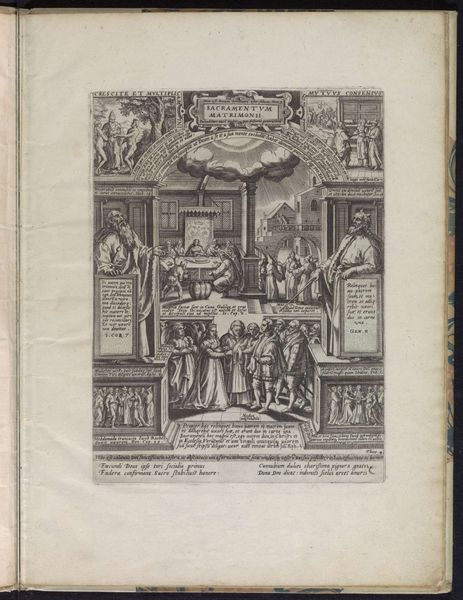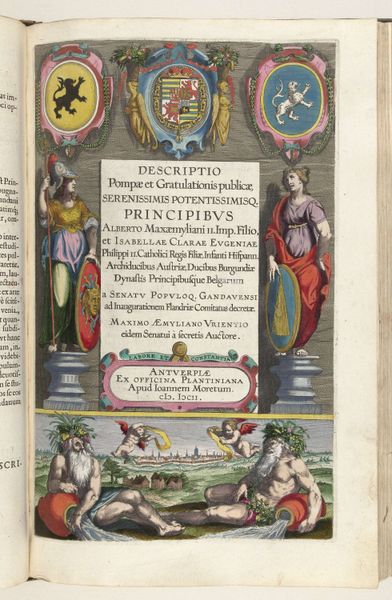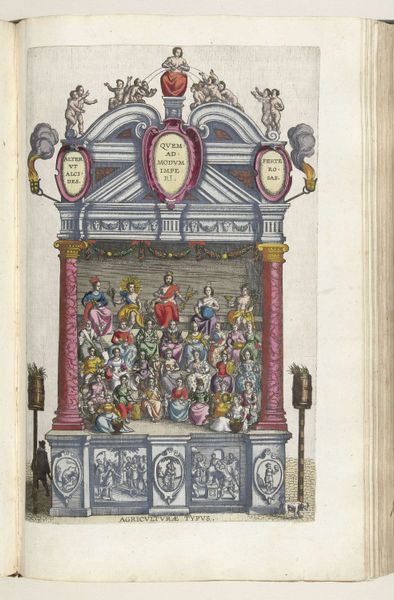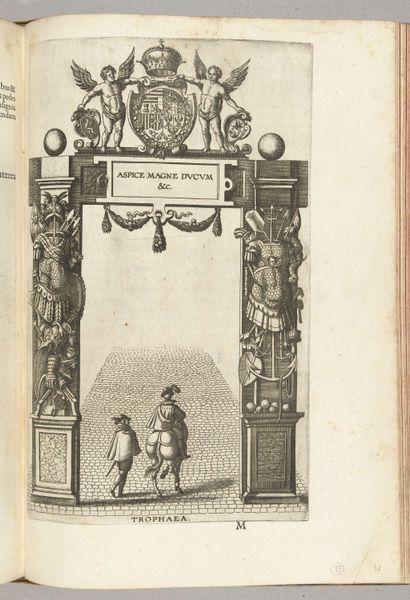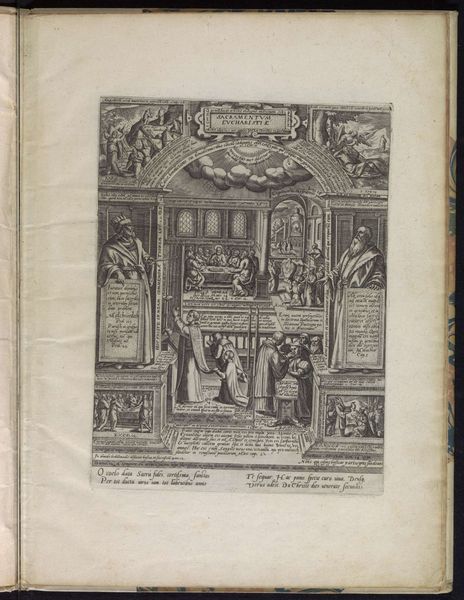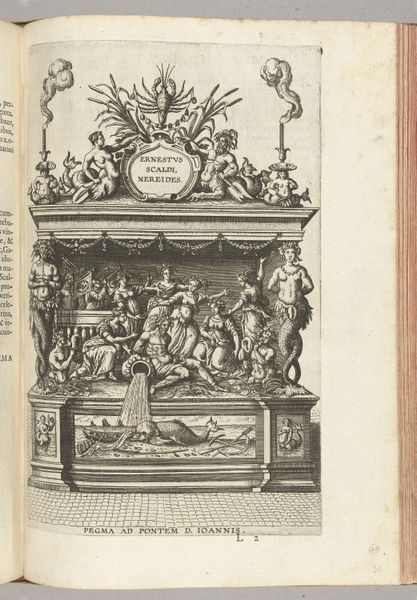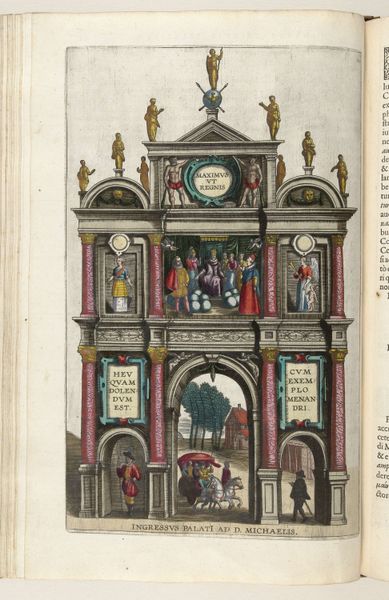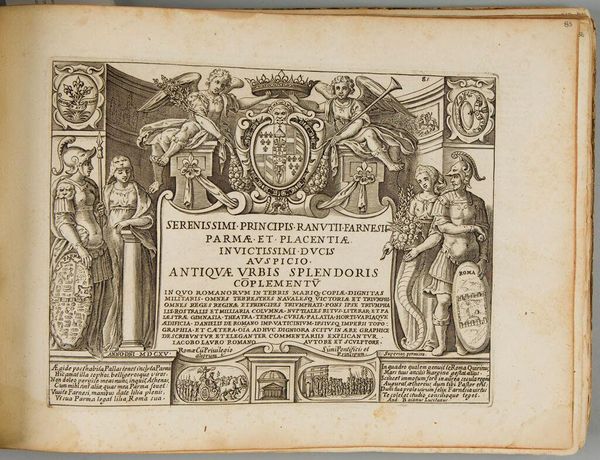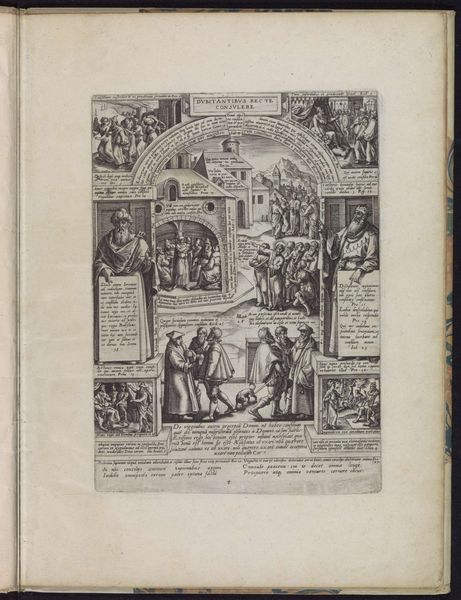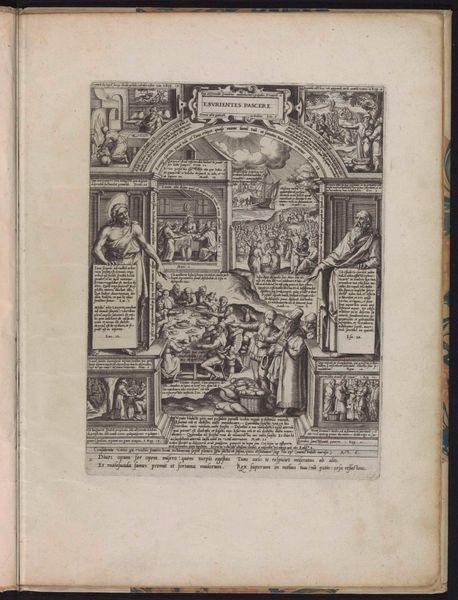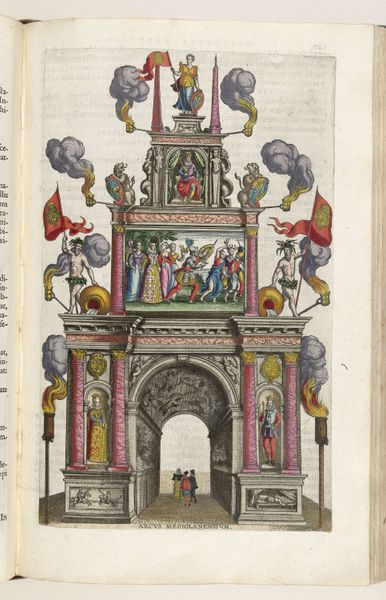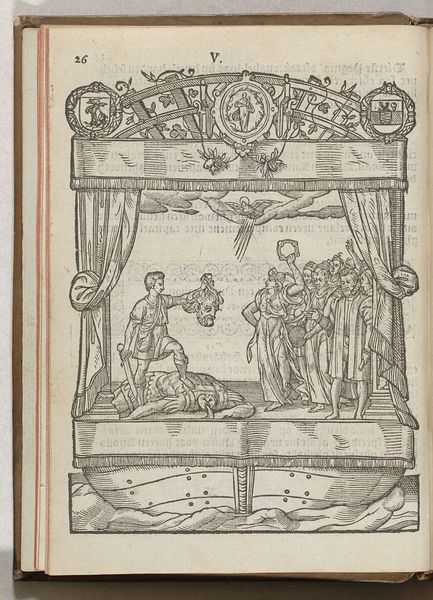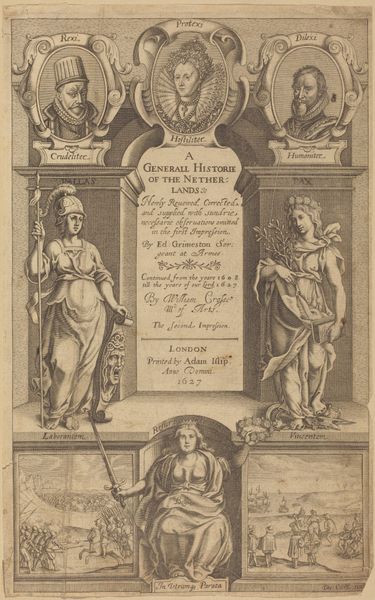
Titelprent voor de beschrijving van de intocht van Albrecht en Isabella te Valenciennes, 1599 1600 - 1602
0:00
0:00
graphic-art, print, engraving
#
portrait
#
graphic-art
#
baroque
# print
#
figuration
#
coloured pencil
#
watercolour illustration
#
history-painting
#
decorative-art
#
engraving
Dimensions: height 328 mm, width 212 mm
Copyright: Rijks Museum: Open Domain
Editor: So this is "Titelprent voor de beschrijving van de intocht van Albrecht en Isabella te Valenciennes, 1599," an engraving from around 1600. It depicts Albert and Isabella, elaborately framed. I'm struck by how much power the image conveys, it feels…overwhelming. What do you see in this piece? Curator: I see a meticulously constructed performance of power, reflecting the fraught political landscape of the time. Consider the context: Albrecht and Isabella's rule in the Spanish Netherlands was contested. This image, with its classical allusions and emphasis on heraldry, attempts to legitimize their authority, performing power rather than simply showing it. Editor: Performance? How so? Curator: Note the architecture framing them: Triumphal arches, equestrian statues. This is not just a portrait, but a carefully staged representation intended to link them to a lineage of rulers, to classical ideals of leadership. This evokes critical questions of access, such as who could consume images such as this and what message would the broader population get when such displays and celebrations occurred? Editor: It’s interesting to think of this as a political act. Curator: Exactly. Consider the symbolism of the lions and other figures. Are they symbols of strength or control? What message do you think the artist and rulers were attempting to convey by placing their image in such a context? Furthermore, how does it reinforce a specific social order and potentially exclude other narratives? Editor: So it's not just a historical document, but an argument? Curator: Precisely! It participates in a dialogue about authority, legitimacy, and the very nature of power itself. To understand it fully, we have to question who is included, who is excluded, and whose voices are amplified in this carefully constructed image. Editor: I see the piece with new eyes now; thank you for pointing that out! Curator: Indeed. Let's continue to push past a mere description and engage more intentionally with socio-political questions regarding historical art.
Comments
No comments
Be the first to comment and join the conversation on the ultimate creative platform.
